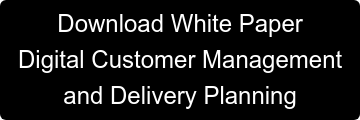In recent months ARGO has assisted our customers with a variety of digital banking initiatives. We provided software tools and expert support to pilot banking efforts as varied as self- and assisted-service tellers, paperless e-signature fulfillment for deposit and lending accounts, and remote account openings via tablets onsite at sporting events.
Each of these initiatives proved successful on a technological level and generated important insights. However, only a subset met end-user milestones sufficient to warrant broader rollout at this time- reinforcing the notion that technology alone is not enough to change engrained customer habits.
Let’s take a closer look at the findings of these banking technology pilot programs, and the lessons learned for consumer experience and channel adoption.
Don’t Give Me Silos
The need for seamless omni-channel interoperability is magnified in a digital banking environment. Operational silos have never been a winning formula. In a digital banking world, however, they escalate from a customer irritant to a recipe for disaster. Organizational structure and operational process changes may both be necessary to achieve the necessary cross-functional workflow.
Expectations for real-time assistance have already been set through consumer online experiences outside financial services. These issues are not unique to digital banking, but channel design may at long last provide the impetus to resolve a longstanding problem.
Give Me Control
Consumer surveys indicate two overriding requirements before users are willing to switch to a self-service model: an enjoyable experience and control over the process. The latter is a common stumbling block with many banking technology solutions. When existing customers agree to try a new channel, they are making an implicit bargain that they’ll be offered an escape hatch should things not proceed as planned.
Consumers are unwilling to accept blame when any issues arise with a new process, and 75 percent of them expect a defined path for escalating issues and receiving timely resolution if needed. Is such a path is not made available, engagement with the new process will promptly cease.
Give Me a Reason
ARGO clients’ self-and assisted- service teller pilots demonstrated the ability to significantly reduce branch costs and in one case, also provided a roadmap for a future-state downsized physical branch design blending self-, assisted-, and full-service solutions. Nonetheless neither institution chose to proceed with further capital investment at this time, as consumers did not find enough benefit to elect self-service in sufficient numbers to justify the upfront expense.
These efforts reinforced the notion that consumers must be presented with a compelling and demonstrable improvement before they will adjust existing behaviors. Even with newer, more robust functionality now available, too many self-service banking technology implementations amount to “ATMs on steroids.” Consumers expect to save time and/or money in addition to ease of use and high reliability before they move forward.
By contrast, paperless fulfillment pilots encountered a different roadblock. Customer opt-in and satisfaction with this new capability scored exceedingly high, no doubt in part to the significant time savings generated and the reduced need for branch visits. In this case, it was employee resistance to change that impeded early returns. Fortunately, staff behavior is easier to adjust. With targeted training and properly designed short-term incentive programs, this quickly improved its metrics and exceeded both its ROI and utilization goals.
You can explore more details on these case studies in our white paper. Although the successful implementation of digital banking channels is no easy feat, standing pat is clearly not an option given clear trends in customer preferences and competitor responses. The key is to incorporate key findings like these to drive a successful banking technology roll out.





